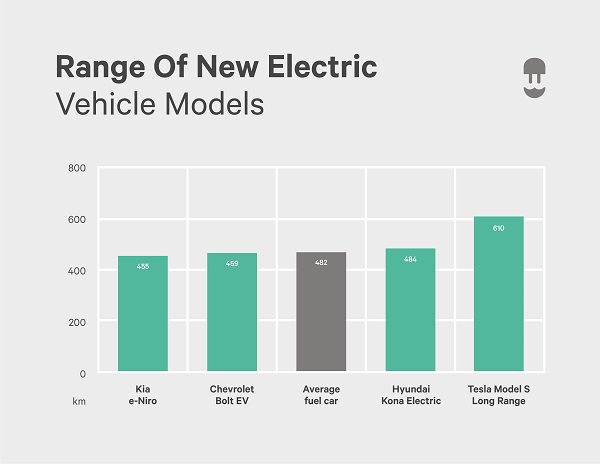Why EVs?
 Aside from avoiding the high gas prices, why make the switch to an EV? If you are thinking of driving an EV from Spring Free EV, understanding the benefits of an EV is the first step to help you make your choice.
Aside from avoiding the high gas prices, why make the switch to an EV? If you are thinking of driving an EV from Spring Free EV, understanding the benefits of an EV is the first step to help you make your choice.
Did you know that:
- Switching to an EV will save you an average of 31% on regular maintenance fees.
- There are over 88,000 public charging stations across the country.
- If we increase EV adoption to 25% in the United States, we could reduce carbon emissions by 242 million tons a year!
The cost of maintenance
Unlike most internal combustion engines an EV does not have a drivetrain, drive shaft, or other moving parts that require regular maintenance. Even though the upfront price of a gasoline vehicle is lower, the cost of maintenance and fuel can offset any savings when you look at the lifecycle of your vehicle.

The more advanced the internal combustion engines become, the more expensive maintenance cost. Automakers design newer vehicles for fuel economy and they tend to be very labor intensive to repair. If you have fuel injection problems or belt replacement there are a lot of components to account for on what was once simple repairs.
With EVs you do not have the same problems with maintenance due to their design. Electric motors do not require belts and drivetrains since most EVs are direct drive. Like any other vehicle, the main repairs you need to account for are your standard brakes and tires.
Starting your EV journey is as easy as scheduling a call with one of our specialists to get you into a Free EV!
Public Charging Stations
What about charging? Where can you charge if you are driving long distances? Luckily the growth in the EV charging industry has helped ease some of the range anxiety in consumers but there is still a way to go. Over the past several years the charging infrastructure has doubled across the United States to nearly 88,000 public charging stations. This is unevenly distributed with about 27,000 charging stations available in California alone and only several other states with over 1,000 charging stations. Aside from infrastructure bills and public initiatives, the private industry is also innovating new solutions such as roadside charging services and emergency jump boxes to help with a boost in your vehicle’s charge.
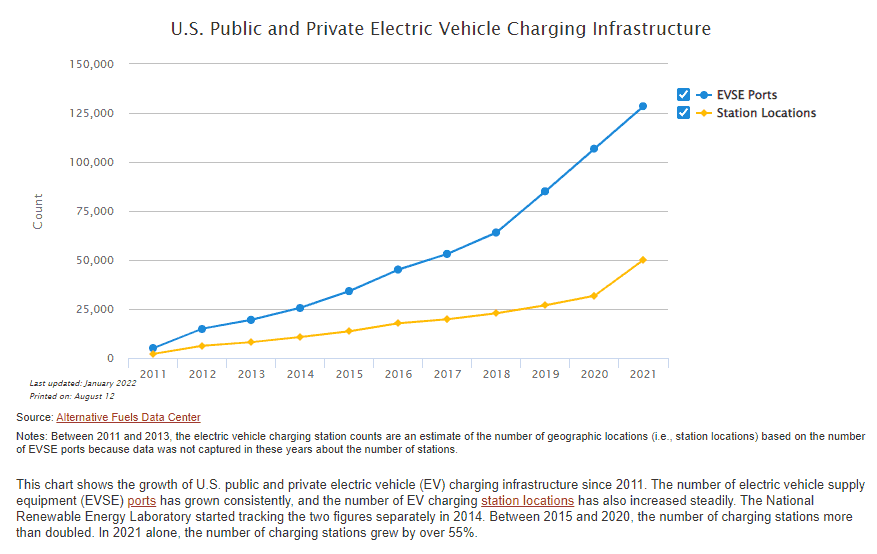
Climate Impact
Although it seems like we are on the path to a serious climate crisis, there is no doubt that converting even a quarter of internal combustion engine vehicles to electric cars would drive down greenhouse gas emissions. According to a recent study at Northwestern University, if 25% of the vehicles on the road are converted to EVs then we would save approximately $17 billion dollars of damage caused by climate change and air pollution. Another sample study by the AGU concluded that if 25% of the United States vehicles were EVs we would reduce about 250 tons of carbon dioxide emissions.
Switching to an EV sounds like a no-brainer, right?
Electric Cars Vs. Gas Cars
 Let’s face it, everyone has an opinion on everything. When it comes to vehicle preference the viewpoint does seem skewed. So which is better: leasing a gas car or an electric car? Are we ready to leave our dependency of crude oil burning vehicles in the past for an electric future?
Let’s face it, everyone has an opinion on everything. When it comes to vehicle preference the viewpoint does seem skewed. So which is better: leasing a gas car or an electric car? Are we ready to leave our dependency of crude oil burning vehicles in the past for an electric future?
Well, which is better?
Head to Head Comparison
EVs are working their way into mainstream, fast charging stations are being built along major highways, grocery stores are providing more EV charging, it seems that now is the time to consider making the switch.
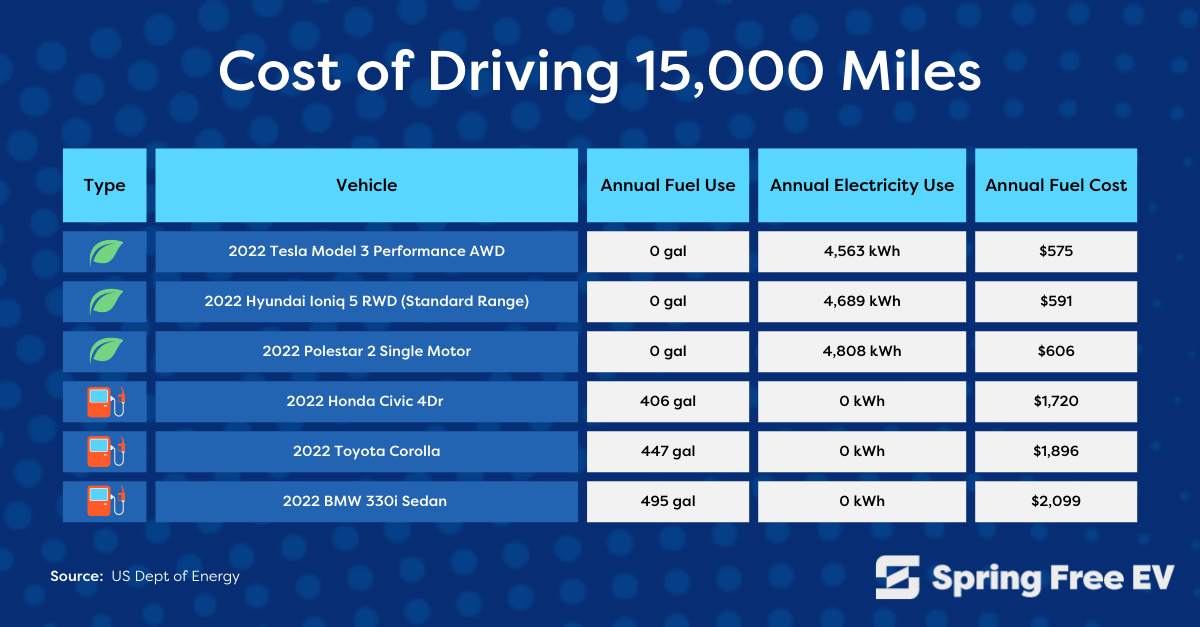
In the past few years, startups like Tesla have produced what most consumers associate with a fully electric vehicle that runs on battery packs. Although plug-in hybrid EV (PHEV) models reduce emissions, they’re still dependent on fuel and contribute to greenhouse gas emissions. Whereas a conventional vehicle runs exclusively on fossil fuels due to the internal combustion engine used to power it.
When considering a new vehicle purchase it is important to understand your wants and needs. Over 91% of global new vehicle sales are still fossil fuel powered vehicles. Cheap fossil fuels have shaped our infrastructure locally and abroad, it’s hard to think of our last trip to the gas station.
Let’s review some common highlights when considering EVs versus gasoline cars.
The Cost of the Vehicle
Most consumers’ objection to any new car is the cost and with EVs the overall sentiment is that they are too expensive. This is no longer the case for most EVs since new technology makes most models more affordable. Then you take into account that you no longer need to pay for fossil fuels; they can save you serious money in the long run. Although installing certain types of chargers in your home can get pricey, the standard 120v charger that comes with most vehicles is more than adequate to charge your car over night. Aside from government subsidies and tax credits you can still find a comparable EV price tag and match it to a similar sized gas powered vehicle.
Take the fully electric Nissan Leaf and compare it to the Ford Ecosport SES for example. The Nissan Leaf is currently just $27,400 MSRP compared to the Ford Ecosport SES that comes in at $28,205 MSRP for the 2022 models. This does not include the U.S. Federal tax credit or other incentives that really bring down the upfront cost. With tax credits and rebates this makes a lot of EVs purchase price more affordable than some gas powered vehicle options. According to consumer reports, the average EV owner will save anywhere from $800 to $1000 a year in fueling costs compared to vehicles with internal combustion engines. Of course these savings depend on vehicle size, daily use, and carry load of any vehicle.
How Does EV Range Compare to Gas Vehicles?
Most consumers overestimate their needs for vehicle range and worry about getting stranded. According to this survey, drivers claimed that they would require an average of 272 miles on a single charge to consider purchasing an EV. The average commuter travels between 36.5 miles in urban areas and 48 miles a day in rural areas.
For new EVs in the United States, the average battery range is about 250 miles, which is approximately an average of 12 gallons of gas for a vehicle that gets 25 MPG. For example, the Nissan Leaf gets around 226 miles per charge while a Ford Ecosport SES will go an average of 317 miles on a full tank of gas. The biggest advantage for the EV owner is the convenience of avoiding the gas pump and recharging at home, and the long term savings on fuel and oil changes.
What is the cost of maintenance?
The first thing you’ll notice is an EV does not have a drivetrain, drive shaft, or other moving parts that require regular maintenance. Even though the upfront price of a gasoline vehicle is lower, the cost of maintenance and fuel can offset any savings when you look at the lifecycle of your vehicle.

Studies show that your average EV will save you up to 31% of costs on repairs a year. Like any other vehicle, the main repairs you need to account for with an EV are the standard brakes and tire care. In the near future some EV manufacturers are planning to remove the brake pedal completely and leverage electric motor technology to slow down the vehicle.
Overall
The right car for you comes down to your true needs of vehicle ownership. Understanding your budget and what qualities in a vehicle are important should be a priority. There are a variety of factors to consider, but it is safe to say that EVs are no longer an option to ignore.
Are EVs Better for the Environment?
Let’s face it, no matter how many “greener” products you buy or recycle friendly plastics, there is still a negative environmental impact that usually happens during production. Of course it may seem cynical to think that way, but for some reason this argument comes up more often than you would think with electric vehicles.
So are EVs better for the environment?
EV Production
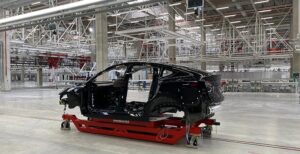 On average, once off the production line a mid-size EV will create an additional 3-4 metric tons of carbon dioxide compared to new cars . There is a reason for this, the battery production. Although the average gasoline powered vehicles have the same basic production needs during manufacturing, most EVs use lithium-ion batteries that require additional raw materials and cause more emissions. The current battery manufacturing process is still the biggest pain point for electricity generation. According to the Wall Street Journal, the Tesla model 3 will emit 65% more carbon emissions during the manufacturing process than a Toyota Rav 4 by the time it rolls out of the factory line.
On average, once off the production line a mid-size EV will create an additional 3-4 metric tons of carbon dioxide compared to new cars . There is a reason for this, the battery production. Although the average gasoline powered vehicles have the same basic production needs during manufacturing, most EVs use lithium-ion batteries that require additional raw materials and cause more emissions. The current battery manufacturing process is still the biggest pain point for electricity generation. According to the Wall Street Journal, the Tesla model 3 will emit 65% more carbon emissions during the manufacturing process than a Toyota Rav 4 by the time it rolls out of the factory line.
Yes, when comparing a brand new EV to a brand new gasoline vehicles, the EV creates more air pollution being produced. What about over time? What is a zero-emission vehicle’s impact compared to owning a gas powered alternative?
The Life cycle of Your Vehicle
The true cost of your vehicle has many variables, from gas, tires, to maintenance. With an EV, there are less mechanical components and only renewable energy is required instead of fossil fuels. So what are some things to keep in mind when comparing the carbon impact of an EV to a standard gas powered vehicle?
Traditional vehicles require an oil change every 5,000-7,000 miles, so depending on your driving habits, you’ll need to get a maintenance check within the first few months of ownership. Your average tune up for your internal combustion engine (ICE) requires motor oil, which is refined from crude oil. The crude oil refining process is one of the largest shares of greenhouse total emissions in the world and necessary to produce gasoline and motor oil. The standard EV will have 1-2 electric motors and large lithium-ion battery packs that will only need to be recharged based on the vehicle’s range. The range usually depends on the make and model of the vehicle but average between 200-400 miles per complete charge. Some EVs will require software updates, but much like a smartphone, they typically are installed during charging overnight. According to Tesla they recommend that you take your vehicle to get checked every year or every 12,000 miles. Unlike a vehicle that runs on gasoline, you do not need to get your car serviced on a regular basis.
Over the course of ownership, an EV will have a smaller carbon footprint than your gasoline powered vehicle if you account for maintenance and need for fossil fuels.

Daily Driving
The cost of an EV may be high up front, but the long term savings can help with the rising price of gas. Although the convenience of gas stations make a traditional vehicle seem much easier to manage, the recent popularity of clean transportation has helped spur the growth and demand of charging stations across the country.
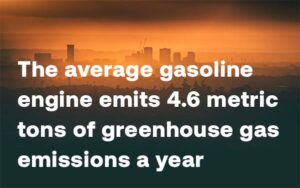 According to the EPA, the average gasoline engine emits 4.6 metric tons of greenhouse gas emissions a year from its tailpipe. The average co2 emissions from the tailpipe of a vehicle is 8,887 grams a gallon. Additional greenhouse gasses are produced after the refining process and during transportation to local gas stations. Even with the convenience of gas stations on every corner, there is a huge cost on the environment and your wallet.
According to the EPA, the average gasoline engine emits 4.6 metric tons of greenhouse gas emissions a year from its tailpipe. The average co2 emissions from the tailpipe of a vehicle is 8,887 grams a gallon. Additional greenhouse gasses are produced after the refining process and during transportation to local gas stations. Even with the convenience of gas stations on every corner, there is a huge cost on the environment and your wallet.
What about EV charging stations? Sure, they emit greenhouse gasses as well but the average price is much cheaper than filling a tank of gas. Depending on where you live your local charging station may be more carbon neutral than you think. Unlike gas stations EV charging stations rely on electric power from the electricity grid. Over the past 10 years there has been a push for more renewable energy sources across the board in America. The average EV carbon footprint is on the decline as America divests from coal and natural gas electric power plants. Unlike internal combustion engines, EVs will continue to decline carbon emissions as we switch to other renewable energies such as wind and solar.
The Verdict
Yes, it is easier to just go with what you know and purchase your conventional gas guzzling vehicle of your choice. With technology, new infrastructure, and even programs like Free EV, now is the BEST time to explore what it is like to drive an EV and help reduce climate change. Not only will it be more cost effective in the long run, but you will be producing fewer emissions in our world by switching to an EV today!
